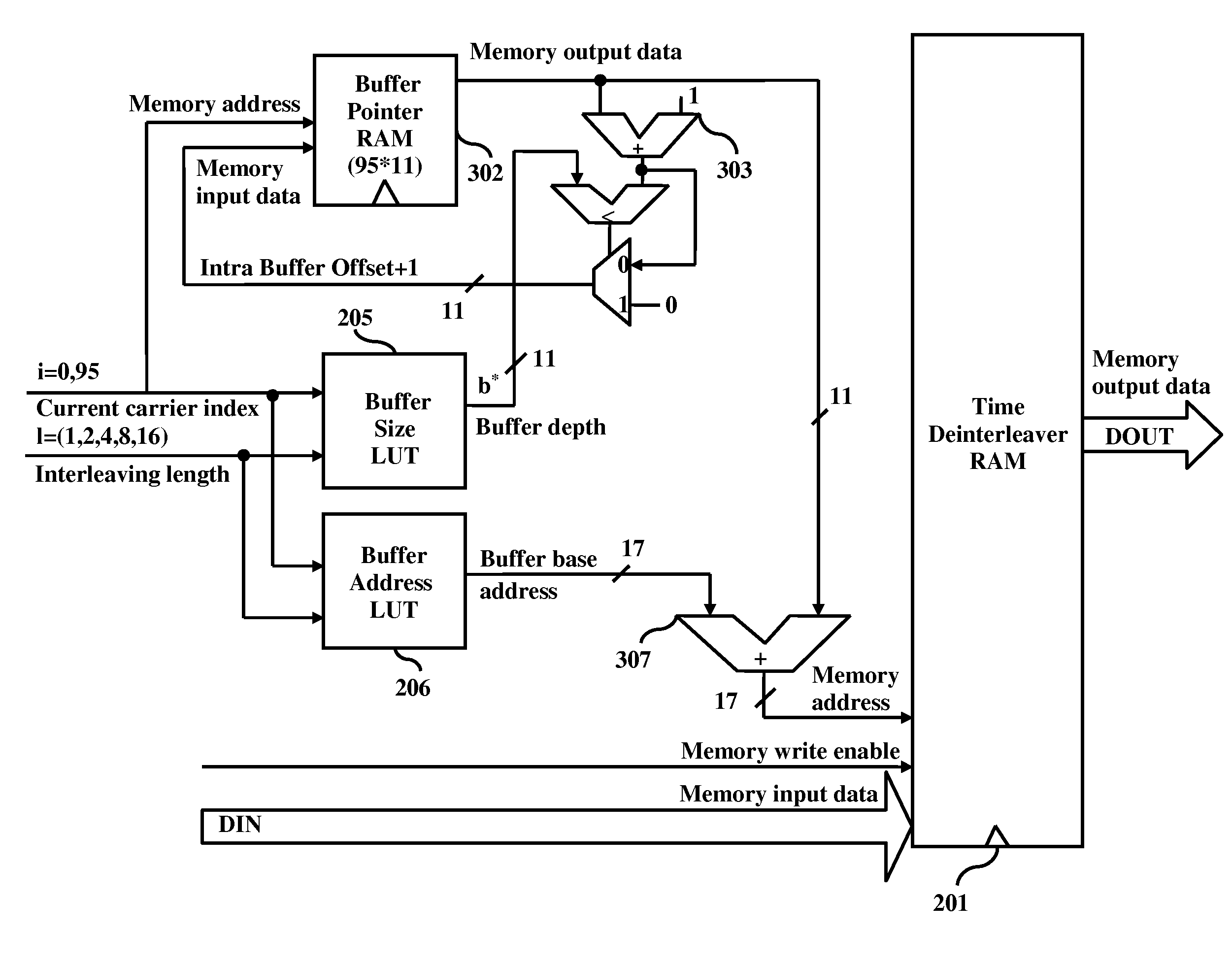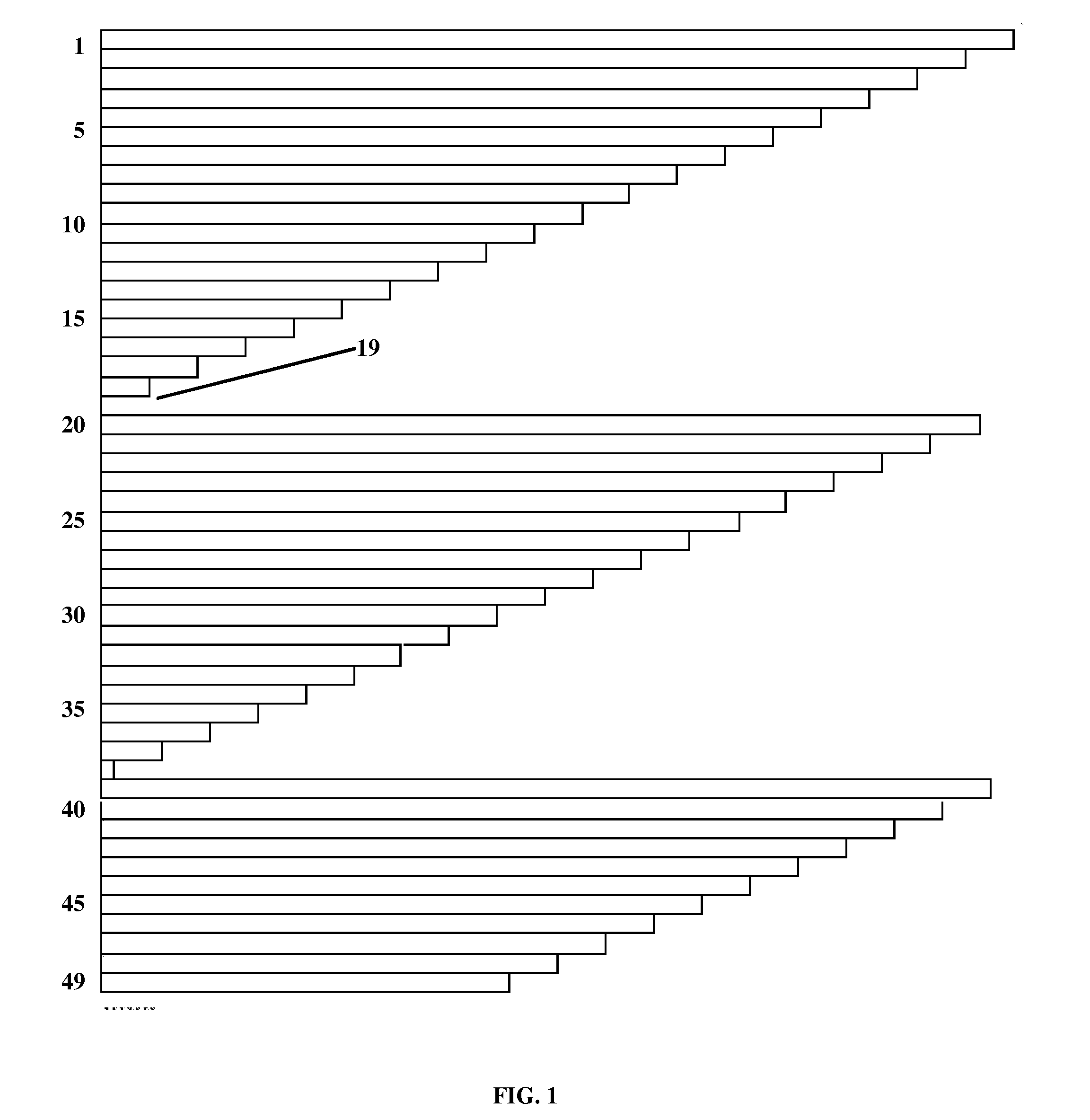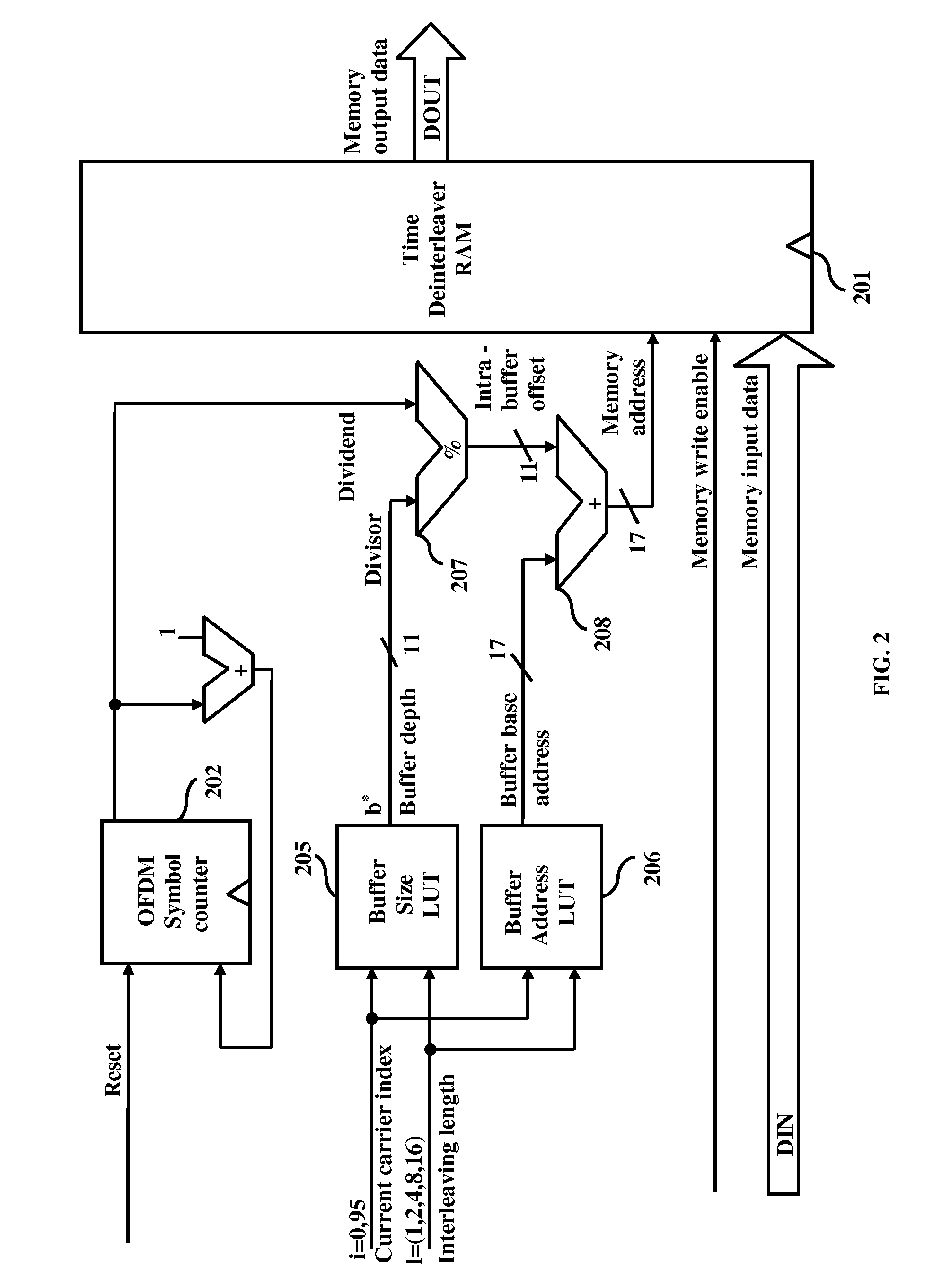Area and power efficient architectures of time deinterleaver for isdb-t receivers
a time deinterleaver and receiver technology, applied in the field of communication systems, can solve problems such as large number of counters, data gets distorted by channel impairments, and transmission data typically cannot be completely recovered
- Summary
- Abstract
- Description
- Claims
- Application Information
AI Technical Summary
Benefits of technology
Problems solved by technology
Method used
Image
Examples
first embodiment
[0035]FIG. 4, with reference to FIGS. 1 and 2, illustrates a method for de-interleaving interleaved data using memory based pointer architecture in accordance with the first embodiment herein. The method begins at step 410, where for each data carrier the corresponding pointer value is read from the buffer pointer RAM 302 and incremented using adder 303. The incremented value is stored back in the buffer pointer RAM 302. At step 420 the delay buffer size value of the corresponding carrier is retrieved from the first LUT 205. The incremented pointer value is compared with the retrieved buffer size value using circular increment logic to calculate the intra buffer offset at step 430. Circular increment logic involves adding ‘1’ to the incremented pointer value and comparing the new pointer value with the retrieved buffer size value. If the new value exceeds the buffer size, the new pointer value is zeroed out. At step 440, the buffer base address value of the corresponding carrier is ...
second embodiment
[0036]FIG. 5, with reference to FIGS. 1 and 3, illustrates a method for de-interleaving interleaved data using modulo based pointer architecture in accordance with the second embodiment herein. The method begins at step 510, where OFDM symbol counter 202 counts each received symbol. At step 520 the delay buffer size value of the corresponding carrier is retrieved from the first LUT 205. The intra buffer offset is calculated by dividing the OFDM symbol counter with retrieved delay buffer size value at step 530 using modulo divider 207. At step 540, the buffer base address value of the corresponding carrier is retrieved from the second LUT 206. The memory address where the input data needs to be stored is calculated by adding the intra buffer offset to the retrieved buffer base address at step 550. The data bits get stored in the deinterleaver RAM 201 at step 560.
[0037]FIG. 6 illustrates the test data input timing for both the modulo based pointer architecture of FIG. 2 and the memory...
PUM
 Login to View More
Login to View More Abstract
Description
Claims
Application Information
 Login to View More
Login to View More - R&D
- Intellectual Property
- Life Sciences
- Materials
- Tech Scout
- Unparalleled Data Quality
- Higher Quality Content
- 60% Fewer Hallucinations
Browse by: Latest US Patents, China's latest patents, Technical Efficacy Thesaurus, Application Domain, Technology Topic, Popular Technical Reports.
© 2025 PatSnap. All rights reserved.Legal|Privacy policy|Modern Slavery Act Transparency Statement|Sitemap|About US| Contact US: help@patsnap.com



